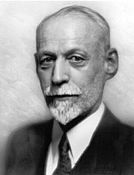
Back Kanadische Unterhauswahl 1940 German Elecciones federales de Canadá de 1940 Spanish Élections fédérales canadiennes de 1940 French 1940年加拿大联邦大选 Chinese
| |||||||||||||||||||||||||||||||||||||||||||||||||||||||||||||||||||||||
245 seats in the House of Commons 123 seats needed for a majority | |||||||||||||||||||||||||||||||||||||||||||||||||||||||||||||||||||||||
|---|---|---|---|---|---|---|---|---|---|---|---|---|---|---|---|---|---|---|---|---|---|---|---|---|---|---|---|---|---|---|---|---|---|---|---|---|---|---|---|---|---|---|---|---|---|---|---|---|---|---|---|---|---|---|---|---|---|---|---|---|---|---|---|---|---|---|---|---|---|---|---|
| Turnout | 69.9%[1] ( | ||||||||||||||||||||||||||||||||||||||||||||||||||||||||||||||||||||||
| |||||||||||||||||||||||||||||||||||||||||||||||||||||||||||||||||||||||
 | |||||||||||||||||||||||||||||||||||||||||||||||||||||||||||||||||||||||
 The Canadian parliament after the 1940 election | |||||||||||||||||||||||||||||||||||||||||||||||||||||||||||||||||||||||
| |||||||||||||||||||||||||||||||||||||||||||||||||||||||||||||||||||||||
The 1940 Canadian federal election was held March 26, 1940, to elect members of the House of Commons of Canada of the 19th Parliament of Canada. Prime Minister William Lyon Mackenzie King's Liberal Party was re-elected to their second consecutive majority government.
The election was overshadowed by the Second World War, which caused many Canadians to rally around the government. In response to this, the Conservative Party of Robert Manion ran on a platform advocating the creation of an all-party national unity government and ran under the name "National Government" in this election. Though Manion was personally opposed to conscription, the Liberals faced intense pressure in Quebec on the question and promised not to institute the measure. This promise was to haunt the Liberals as they faced increasing pressure from the military and especially from English Canada to bring in the measure. To release him from his September 1939 promise, King called a plebiscite in 1942 on the question. See also Conscription Crisis of 1944. It was the most successful election for the Liberal Party in its history, in which it captured 73% of the seats in the House of Commons. By contrast, the Conservatives performed even worse than in the previous election, finishing with the same number of seats, a slightly lower share of the popular vote, and with Manion being defeated in his riding. This was the last election contested by the original incarnation of the Conservatives, who thereafter merged with remnants of the moribund Progressive Party to form the Progressive Conservatives.
Social Credit ran jointly with the New Democracy movement of William Duncan Herridge.
Some candidates of the Conservative and Social Credit parties insisted on running under the traditional names, however.
The Co-operative Commonwealth Federation (CCF) gained its first seat east of Manitoba, with the election of Clarence Gillis from Cape Breton Island. This election was the last one for its ailing leader, J. S. Woodsworth.
- ^ "Voter Turnout at Federal Elections and Referendums". Elections Canada. Retrieved March 10, 2019.
© MMXXIII Rich X Search. We shall prevail. All rights reserved. Rich X Search



